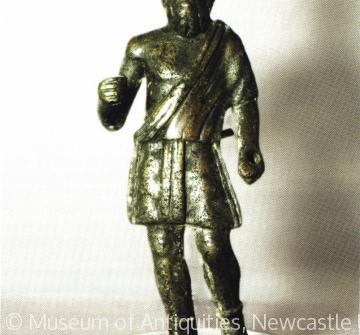Romans in the Sunderland area

There is no firm evidence of Roman settlement in Sunderland, with the main sites of occupation in the region being the Roman forts at Newcastle, South Shields and Chester-le-Street. Nevertheless, that there was some form of Roman activity in Sunderland is borne out by finds of coins, pottery fragments and a probable burial site in the area. Although some coins were unearthed in central Sunderland, the more significant discoveries were made on the north bank of the Wear, in Southwick and Fulwell and at the Carley Hill quarry where, in 1820, a bronze figurine of Jupiter Dolichenus, a Romano-British god, was found. A far more potentially significant sign of Roman activity in the area may have existed further downstream, at Hylton, where, until their removal in the mid-19th century, a series of massive stone blocks, known locally as the Brigg Stones, straddled the river not far from the route of the medieval ferry. A few stones, thought to have been part of this group, still survive and these show signs of what may have been Roman methods of construction, leading to suggestions that they may once have formed part of a Roman causeway or ford, linking the northern and southern banks of the river.
Content generated during research for two paperback books 'Sunderland and its Origins: Monks to Mariners' (ISBN 13 : 9781860774799) and 'Sunderland: Building a City' (ISBN 13 : 978-1-86077-547-5 ) for the England's Past for Everyone series


